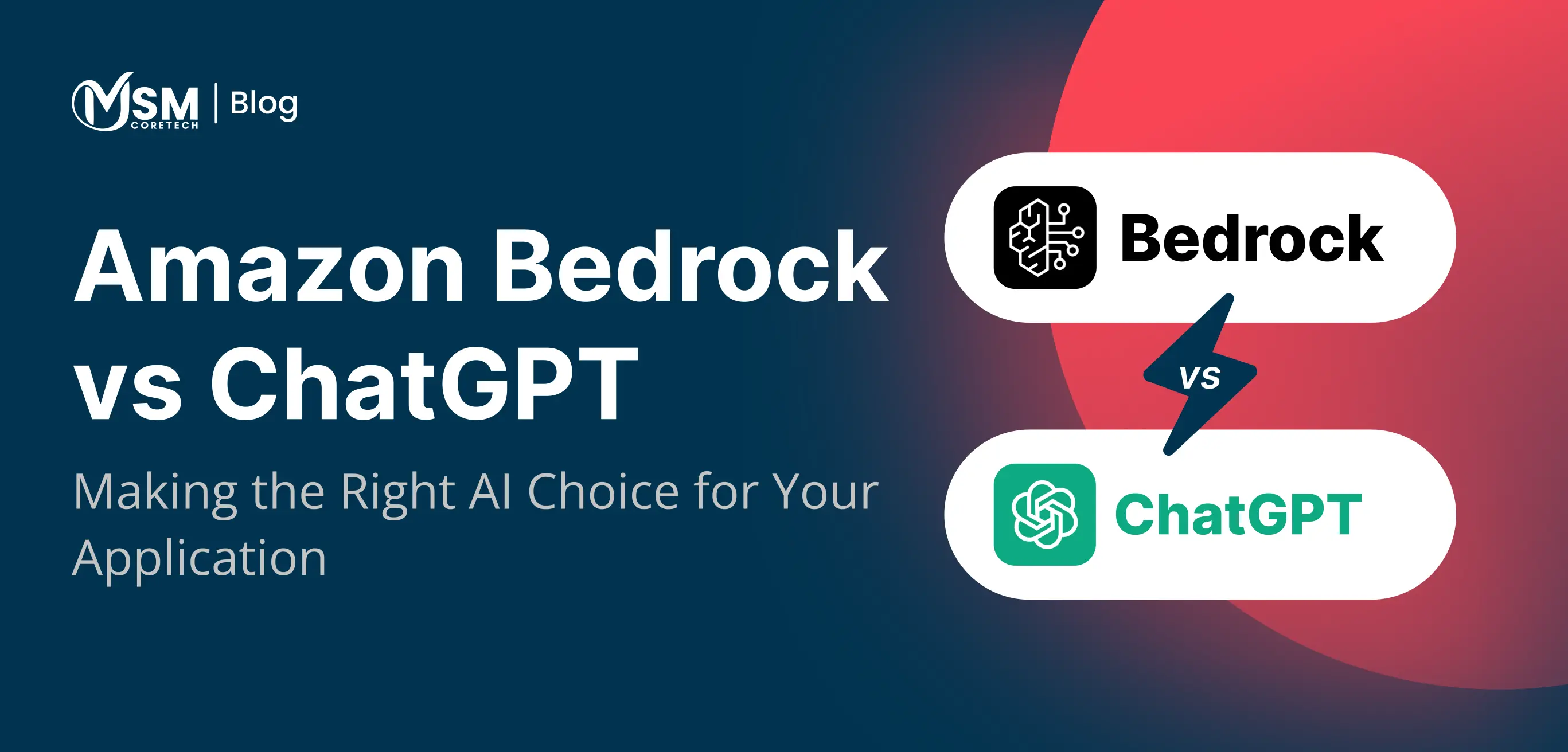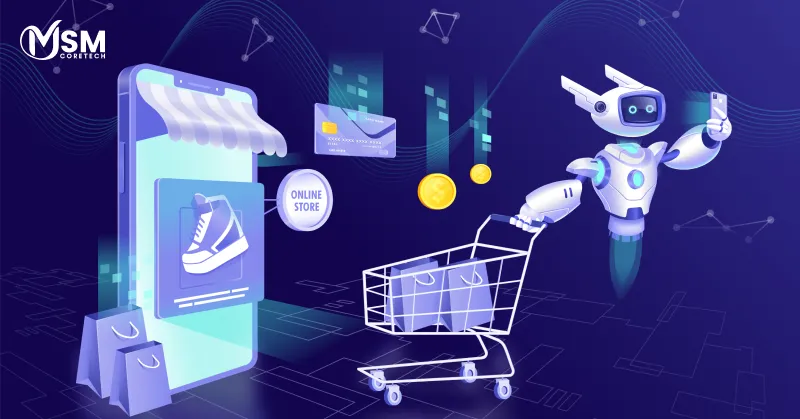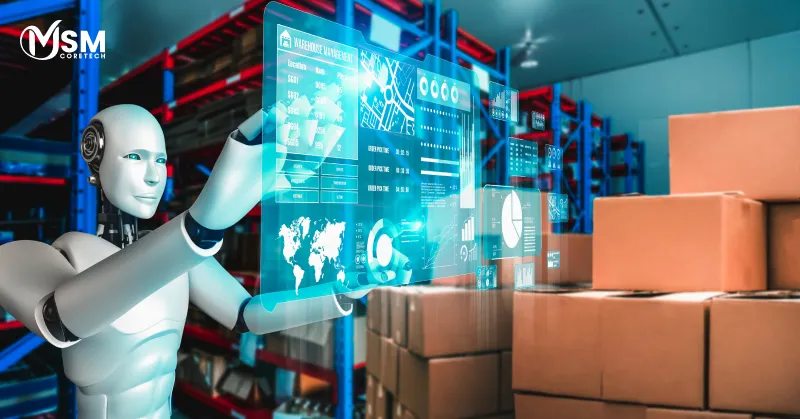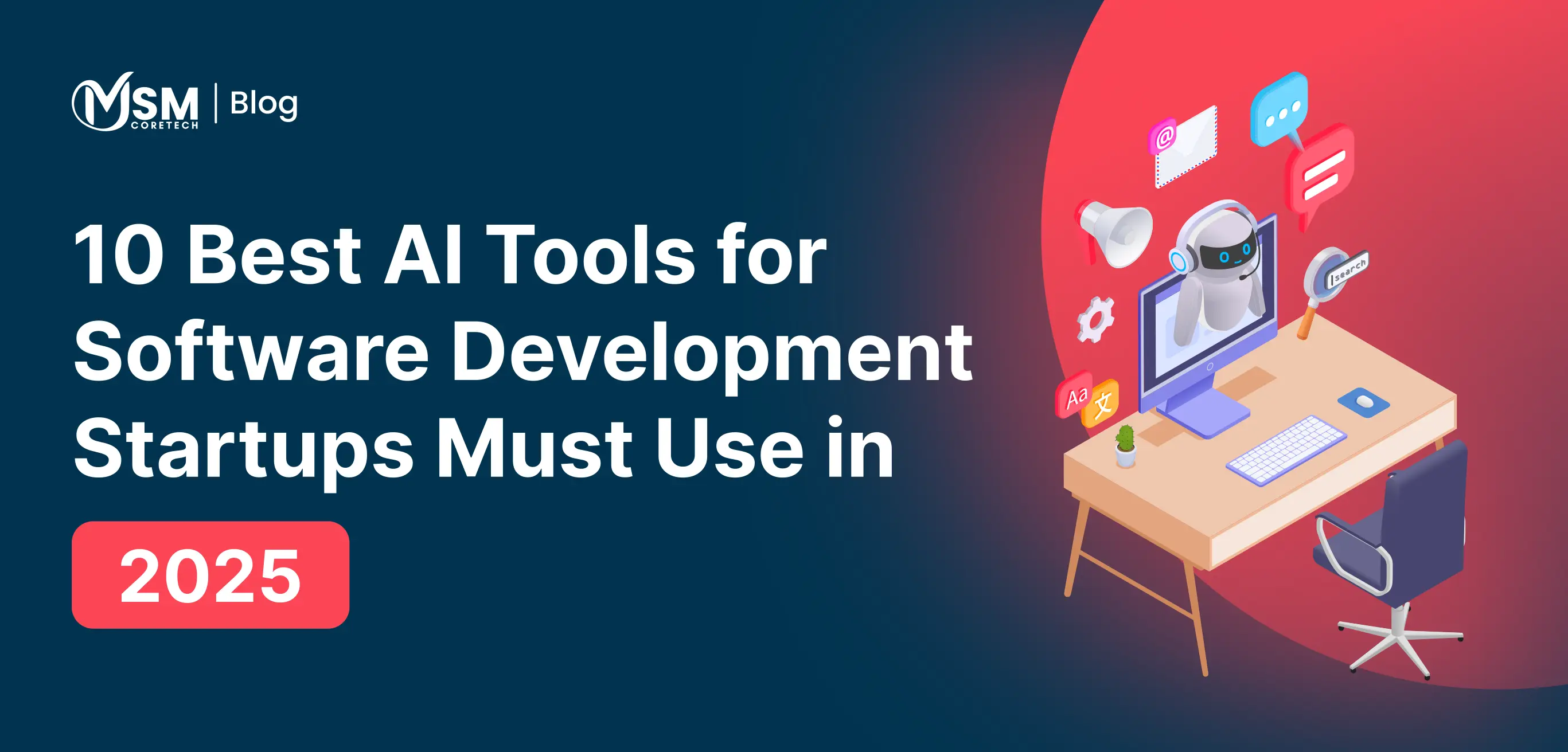Amazon Bedrock vs ChatGPT: Which AI Platform Is Best for Your Application?

Organisations are rapidly implementing tools like Amazon Bedrock agents and the ChatGPT API to enhance services, such as automating repetitive tasks, analysing market trends, and offering effective consumer support.
While developing AI-powered applications for optimizing cloud functionality, Amazon's Bedrock and ChatGPT remain two of the most widely used AI tools, offering greater accessibility options.
Comparing these two applications is a defined approach as both are AI generative tools, but they are built to offer different sets of consumers with different purposes. ChatGPT is an automated chatbot that can be used for powering a full application, whereas Bedrock can be used for leveraging custom AI solutions.
This blog aims to offer a comprehensive comparison between ChatGPT and Amazon Bedrock by analysing their core features and differences.
Amazon Bedrock: Overview & Core Capabilities
Amazon Bedrock is a complete, automated AWS-developed AI tool that offers access to selected advanced-performing foundation models with a single API. The tool offers development of generative AI-powered applications to offer a set of features, advantages with the serverless ecosystem that eliminates the need for a managed mechanism.
With the help of Amazon Bedrock, anyone can experiment with top-performing foundation models in accordance with their use case. Moreover, the serverless ecosystem offers users to get started easily, customise their foundation models by embedding personal data.
Core Capabilities -
- Simplified user experience for GenAI applications - Amazon Bedrock is an automated serverless system that eliminates the use of a managed structure for the foundation models. This tool offers a single API for any kind of foundation model by offering customization, seamless operation, and version updates.
- Innovation of agents and chatbots for automating multi-tasking - There are several use cases in which organisations need to automate certain repetitive tasks according to the model working response. With the deployment of Agents, developers can track and optimise their prompting style with strategic recommendations, with the integration of needed APIs for completing tasks.
- Integration with AWS - Amazon Bedrock seamlessly integrates within the AWS ecosystem for optimised task-performing capability, such as using Amazon S3 for storing the gathered information or connecting with Amazon Sagemaker for implementing machine learning workflows. This interconnectedness offers users in developing end-to-end encrypted applications with integration of the AWS ecosystem.
- Performance and cost optimization - Bedrock provides effective pricing subscriptions on the basis of their demand. Users can enhance their cost efficiency by selecting models based on their structures. Additionally, by utilising features like intelligent prompting, which can decrease the cost, users can enhance their FMs' performance and track growth.
ChatGPT: Overview & Core Capabilities
ChatGPT is an AI-powered generative conversational chatbot that can analyse text, videos, images, and prompts to offer solutions that are humanly developed. From writing content or developing code, it can offer straightforward solutions for complex tasks. Moreover, it is easy to develop customised applications with the help of ChatGPT; developers just need to select the right models according to their needs. It has been developed on OpenAI’s large language models, currently running on model GPT-5.
Core Capabilities -
- Human-language understanding - This is a foundational feature that enables ChatGPT to analyse the intent of human language. By analysing human input text, the tool can offer relevant answers with their logical explanations as it is trained with a large amount of prompts.
- Content generation - ChatGPT can work on different kinds of tasks related to the field of writing. It can generate a whole new content, can develop summaries of long documents, and can paraphrase the text while offering useful recommendations.
- Conversational dialogue processing - ChatGPT can understand typical conversations while remembering the old ones to offer a relevant, seamless conversation flow. This feature allows users to communicate their issues easily in a more natural way.
- Web search ability for deeper solutions - ChatGPT can gain information from the web in real-time to offer relevant solutions with its source to provide more trusted and reliable solutions. Additionally, it can also gather information from various sources and combine it into a single source of information for easy understanding.
Amazon Bedrock vs ChatGPT: Direct Comparison
Are They Alternatives or Complementary?
Whether ChatGPT and Bedrock operate as alternatives or complementary depends totally on their use case:
- Alternative for end-users - People who use AI models for their general problems, ChatGPT acts as a superior alternative in the context of the raw version of Bedrock, as it offers a simple user interface with no technical input needed, which makes it easy for individual users to operate.
- Complementary for IT-users and developers - For organisations developing AI-powered applications, both platforms act as a complement to each other. Teams can use ChatGPT for simpler tasks, which can be solved through conversations, and can leverage Bedrock for more complex tasks that require proper security measures. A developer can easily generate a prototype with the help of the ChatGPT API, and after that, can enhance its features, optimise its functioning with the help of Bedrock.
Comparison Table
| Features | ChatGPT | Amazon Bedrock |
| Regulatory support system | Supported by AWS compliance features, consisting of FedRAMP, HIPAA and other security measures making it viable to be used by industries like healthcare and finance. | Leverages data processing agreements with SOC 2 compliance guidelines. Additional considerations might be required for highly regulated sectors. |
| Automation and agents | Help in developing AI-powered agents that can perform multi-tasks by automating and extracting information from different sources while connecting with other AWS services to offer solutions for complex or large scale automation processes. | Offers people from both tech and non-tech backgrounds in developing low-feature agents for automating simple tasks. Best suited for simple and small-scale automation processes. |
| API and development | A single API offers access to all kinds of FMs, which is advantageous for current AWS users. | Provides plug-and-play API which can offer solutions across platforms and with different programming languages. |
| Data Privacy | Information processed through Amazon Bedrock stays in the AWS account of the user. The information is also not used anywhere else offering an extensive layer of support. | Free or general users of the local chatbot have less data privacy policies. |
| Foundation models | Provides a wide range of FMs from different AI providers like Meta, stability AI and its own Titan model. This helps in overcoming significant barriers like vendor-lock in offering effective shopping. | Works with a single Fondation model with own developed models such as (GPT 4o and GPT 5). This offers |
Pros and Cons of both platforms
Amazon Bedrock -
| Pros | Cons |
|
|
ChatGPT -
| Pros | Cons |
|
|
Best Business use Cases: Amazon Bedrock & ChatGPT
Amazon Bedrock-
Amazon Bedrock is developed for regulated industries that emphasize their security features and want control over their information.
- Secures internal knowledge management system - Organisations in the financial and healthcare sectors can develop their own information retrieval system, which can store their important information within the AWS ecosystem.
- Automation according to the enterprise - Big companies can implement secure and flexible AI-powered solutions across various departments by automating repetitive tasks such as consumer support, issues in supply chain management.
ChatGPT-
ChatGPT is very good for new-age startups as it offers conversational support and has trained AI models for effective content generation.
- Consumer-problem addressing chatbots - Small organisations can integrate ChatGPT into their websites to offer instant responses addressing common consumer questions and offer full support without any downtime.
- Rapid development of prototype - The easy integration and use of a single API helps new-age companies in developing their MVP quickly for launching it in the market.
Limitations of Amazon Bedrock and ChatGPT -
Amazon Bedrock -
- Very expensive for large-scale projects - In order to develop complex and large-scale applications, Bedrock can be proven very expensive, mainly while developing personalised models.
- Window limits - A model can reflect a set number of windows in a single request. Developers must segment the information from a large document to balance with the window limit.
- Learning curve - Integration with the AWS ecosystem needs a precise understanding of both AWS and AI services. This can offer significant challenges for organisations or individual developers who do not have any past experience of using Amazon Bedrock.
ChatGPT -
- No reliable insights - As it can process and offer wide information, it offers significant challenges in offering valuable insights and real-world examples.
- Text input limit - ChatGPT leverages limitations on generating answers with a single text length, seeking out long answers that need to be divided into segments to generate better responses.
- Misleading information - The model can hallucinate or generate false information sometimes due to a lack of real-world information, which can lead to the spread of irrelevant information.
What to Choose between Amazon Bedrock and ChatGPT for Your Business -
Amazon Bedrock and ChatGPT can be seen as very similar to each other, as both models act as generative AI models. However, the use of both models is done for very different purposes. Several users think that these are both interchangeable models, but in the real world, one is preferred as a development platform, and the other is represented as a fully automated chatbot.
Selecting the right model should be based on the use case of the model, as both a highly advanced and effective tool. Moreover, with proper guidance and expertise, individuals and business organisations can achieve maximum advantage from these models.
Moreover, Amazon Bedrock is best usable for organisations looking for advanced infrastructure to leverage foundation models with the collaboration of other AWS services within the AWS ecosystem. ChatGPT is best suited for companies that need conversational AI for content creation and automating repetitive tasks.
Future Trends and Evolution of Amazon Bedrock and ChatGPT-
Amazon Bedrock is eventually leveraged as a significant AI generative platform for businesses that are seeking deep AI integration within the AWS environment.
- Expansion of agents limits - Bedrock aims to evolve as a symmetry platform, offering users to develop specialized AI agents to understand the reasoning of complex workflows.
- Increased model diversity - Bedrock is aiming to expand its operations by integrating new foundation models from different vendors, like the Qwen model, which was recently introduced which offers more scalability features to users and preventing vendor lock-in.
ChatGPT is acting as a dominant application in the AI market, as OpenAI’s process focuses on improving its core model, increasing developer access, and enhancing the overall cost-effectiveness.
- Increasing the value of autonomous AI agents - AI agents have the ability to plan, execute, and enhance multi-functioning with the lowest human involvement. There is a rapid transformation happening between the assistant API to responsive AI.
- Real-time and personalised experiences - The future of AI will revolve around static answering by analysing real-time data, which helps in offering highly personalized experiences.
However, tools like ChatGPT and Bedrock face strong competition from their competitors like AZURE, Google, due to the rapidly transforming AI community. While each platform has its own set of strengths and weaknesses, the competition is leading to new innovations.
Conclusion
The selection between Amazon Bedrock and ChatGPT majorly depends on the business size, its data security needs, and its ability to integrate with another technological ecosystem. Bedrock is a highly advanced, multi-model application curated for big enterprises that offer highly advanced security mechanisms and deep involvement with AWS services. ChatGPT is a user-friendly AI-powered conversational tool developed through OpenAI’s model base, best used for developing prototypes and productivity-based tools.
Based on their functioning process, businesses should lean towards Amazon Bedrock for building enterprise-grade applications that require robust security and data control measures. Selection on ChatGPT should be done if the business wants fast interventions for growth, such as generating content to get more reach or developing an MVP for a startup, as ChatGPT has a friendly interface, which makes it easy to use for anyone.
Moreover, as AI platforms are constantly evolving, both tools ChatGPT and Amazon Bedrock are reframing the AI industry. Selecting the right AI platform should be done on the basis of its use cases because in the race of innovation and experimentation, the right selection defines the future outcomes.
Related Blogs

Generative AI in eCommerce: Growth, Benefits & Future Trends
Learn how generative AI is transforming ecommerce by improving customer experience, boosting sales, and shaping future trends.
Read More

AI in Warehouse Management: Costs, Benefits & Real ROI Insights
Discovering how AI is transforming warehouse management across industries and learning about real-world benefits, challenges, pricing models, and ROI strategies
Read More

Top AI Software Development Tools & Uses
Explore the best AI tools for software development in 2025. Learn how AI enhances coding, debugging, testing, automation, and productivity for faster and smarter software engineering.
Read More




